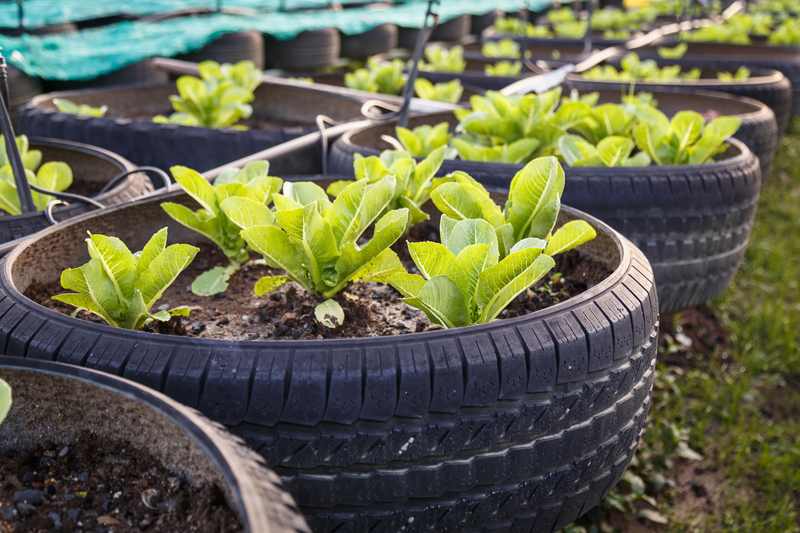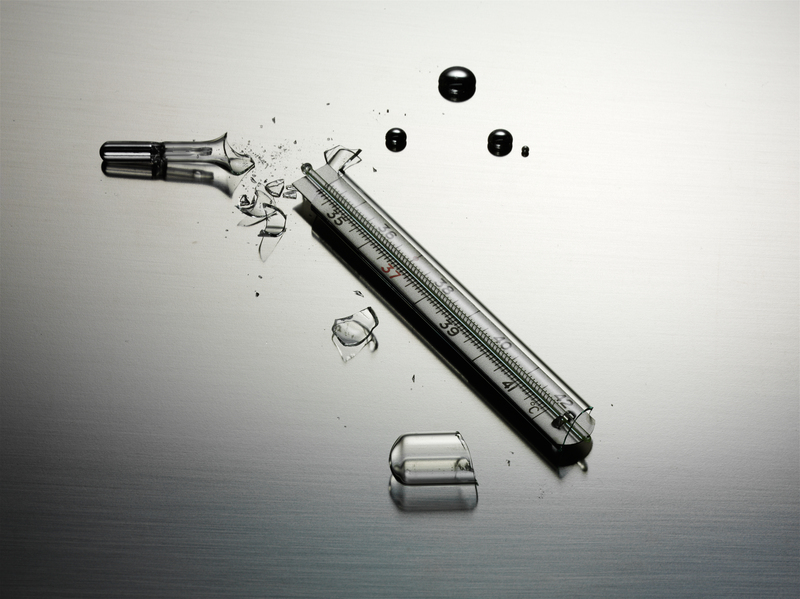Safeguard Your Health and the Environment When Disposing of PPE Waste
The surge in the use of personal protective equipment (PPE) due to the COVID-19 pandemic and ongoing changes in workplace and public health protocols have made proper PPE waste disposal a critical issue. Mishandling PPE waste can jeopardize both human health and the natural environment. Proper awareness and practice are necessary to ensure that the materials designed to keep us safe do not pose long-term threats to our communities or ecosystems. In this comprehensive guide, we'll explore how you can safeguard your health and the environment when disposing of PPE waste, offering practical advice, environmental insights, and actionable steps.
Understanding PPE Waste and Its Environmental Impact
What Is PPE Waste?
PPE waste refers to discarded personal protective equipment including masks, gloves, face shields, gowns, and other items designed to protect individuals from exposure to infectious agents or hazardous substances. The sudden vast increase in PPE use worldwide, particularly single-use items, has resulted in unprecedented levels of waste.
Why Is Proper Disposal of PPE Important?
- Human Health: Improper PPE waste disposal raises the risks of spreading infectious diseases to waste handlers, sanitation workers, and the public.
- Environmental Hazards: Many PPE items contain plastics, which are non-biodegradable, contributing to pollution and harming wildlife.
- Legal and Ethical Obligations: Governments and organizations mandate proper waste segregation and disposal to protect public health and the environment.

Common Types of PPE and Their Disposal Risks
Before learning how to dispose of PPE waste safely, it's essential to recognize the different types of PPE and their specific risks:
- Face Masks: Manufactured mainly from polypropylene plastic fibers, disposable masks can release microplastics into the soil and waterways. Used masks may also harbor pathogens.
- Disposable Gloves: Nitrile, latex, or vinyl gloves are not biodegradable and can harm marine and terrestrial life if not discarded properly.
- Gowns and Aprons: Often single-use, usually made of plastic; these contribute to landfill mass and plastic pollution.
- Face Shields and Goggles: Made from plastics such as PET, difficult to recycle once contaminated.
- Sanitary Wipes and Tissues: Sometimes used as ad hoc PPE, may clog sewage systems and contribute to environmental pollution.
Environmental Challenges Posed by PPE Waste
PPE in Landfills and Natural Ecosystems
According to various environmental reports, billions of discarded PPE items have ended up in landfills, rivers, and oceans since 2020. The majority of single-use PPE contains plastics, which linger in the environment for centuries. Over time, these break down into microplastics, entering the food chain and potentially harming human and animal health.
Infectious and Chemical Hazards
Used PPE may carry pathogenic microorganisms, making them potentially infectious waste. Further, some PPE is manufactured with chemical treatments, adding additional hazardous components to the environment if improperly disposed of.
Wildlife Threats
Animals may ingest PPE or become entangled, leading to injury or death. Cases of marine and terrestrial fauna suffering due to improperly discarded PPE are rising globally, highlighting the urgent need for proper waste management.
Guidelines to Safeguard Your Health and the Environment When Disposing of PPE Waste
To protect both health and the environment, it's crucial to handle PPE waste diligently. Here are actionable steps and best practices to follow:
1. Segregate PPE Waste
- Maintain a separate, labeled bin for used PPE, distinct from regular household or office waste.
- If available, use color-coded bags (often yellow or red) designated for infectious or hazardous waste.
2. Prepare PPE for Disposal Safely
- Do not touch used PPE with bare hands. Always use gloves when handling and removing PPE waste from bins.
- Double-bagging PPE waste is recommended to minimize the risk of leaks and contamination.
- Tie the bags securely before disposal.
3. Follow Local Disposal Regulations
- Consult your municipal or local council guidelines on how to dispose of PPE waste properly.
- Some localities require PPE waste to be collected as hazardous or infectious waste--never mix PPE with recyclables.
- If drop-off centers for medical or hazardous waste exist, utilize them rather than traditional trash bins.
4. Never Litter or Flush PPE
- Masks, gloves, and wipes should never be flushed down toilets or left in public spaces.
- Flushing PPE can clog sewage systems and introduce plastics and pathogens into waterways.
5. Opt for Reusable PPE Where Safe
- Whenever possible, use reusable, washable masks and protective clothing, following cleaning guidelines.
- Reusable PPE reduces waste and environmental burden, but only when cleaned and maintained correctly.
6. Protect Waste Handlers and Sanitation Workers
- Inform waste collectors if bags contain PPE waste.
- Mark bags clearly to reduce the risk of exposure for those handling your garbage.
- Never overfill disposal bags--ensure they are easy to handle and not leaking.
PPE Waste Management in Healthcare Facilities
Hospitals and clinics generate vast quantities of PPE waste, necessitating strict protocols:
- Infectious Waste Streams: All used PPE from patient areas should be disposed in biohazard containers.
- Autoclaving and Incineration: Many healthcare facilities use these methods to render waste non-infectious before final disposal.
- Staff Training: Comprehensive training for all staff ensures PPE is handled and disposed of safely, minimizing environmental impact.
Key Takeaway for Healthcare Professionals
_Strict adherence to established PPE waste management protocols is essential for the dual goals of public health safety and environmental preservation._
Innovations and Alternatives to Reduce PPE Waste Impact
Developments in Biodegradable PPE
Companies and research institutions are investing in biodegradable face masks and gloves made from plant-based polymers or other compostable materials. Adoption of these products could drastically reduce the environmental footprint of PPE.
PPE Recycling Programs
- Some specialized facilities now accept used masks and gloves for recycling into construction materials and plastic products.
- Participation in such initiatives helps transform single-use PPE from waste to valuable resource.
Public Education and Awareness
- Community drive and educational campaigns about the correct way to dispose of PPE waste can significantly reduce improper disposal.
- Schools, workplaces, and public venues should display signage promoting safe PPE disposal habits.

What Can Individuals Do to Minimize Risks?
Simple Steps for Responsible PPE Waste Disposal
- Stay Informed: Keep up-to-date with regulations and recommendations for PPE waste disposal in your area.
- Lead by Example: Practice safe PPE disposal habits and encourage friends, family, and colleagues to do the same.
- Choose Wisely: Select PPE products with lower environmental impact wherever possible.
- Avoid Littering: Always dispose of PPE in the correct receptacle.
Special Considerations for People in Quarantine or Isolation
- Waste from sick individuals should be double-bagged and marked before disposal.
- Hands must be washed thoroughly with soap and water after handling any used PPE.
Conclusion: Safeguard Your Health and the Environment by Disposing of PPE Waste Responsibly
The very purpose of personal protective equipment is to shield us from harm, but without diligent and proper disposal, it can inadvertently become a source of risk. By following good practices--from segregation to safe handling, choosing eco-friendlier alternatives, and staying informed on local regulations--you can safeguard your health and the environment when disposing of PPE waste. As individuals and communities, our concerted efforts can minimize health threats, protect our planet, and move us toward a more sustainable and responsible future.
Additional Resources
- World Health Organization: Guidelines on PPE Use and Disposal
- US EPA: Managing PPE Waste
- CDC: Using Personal Protective Equipment
Remember, every correctly disposed mask or glove is a small but meaningful step toward better global health and a cleaner environment. Make it your mission to dispose of PPE waste wisely--today and every day.